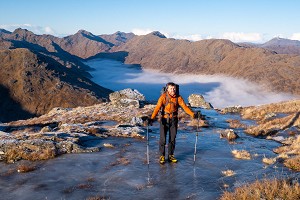
Synthetic insulated jackets typically get a bit clammy if worn on the move, but Rab's Xenair range is designed to be breathable, both keeping you warm when stationary and comfortably un-sweaty when you're working hard. A good example of 'active insulation', Xenair jackets are really versatile, well suited to a variety of weather conditions and activities. This is the sort of layer you can put on in the morning and wear all day without thinking about - and I mean that in a good way.
We first reviewed a number of items from the range over the winter of 2021/22:
Here we're looking just at the warmest 'pinnacle' piece, the Xenair Alpine, which has had some revisions this season.
So what's changed? Well the immediate thing to hit you is the price, which has gone up by a full £40 in the last year-plus. While nobody could call £230 a snip, there are two things to say about that: firstly, it's worth noting that there's more insulation in the new version; and secondly there's the general observation that prices in the UK have risen across the board, something you can't have failed to notice. We're not blaming Rab for that. While it's not cheap, the Xenair Alpine is a quality jacket!
For autumn/winter 23, the main design updates to this jacket are:
- A new, more breathable liner (Rab say its 10 times more air permeable)
- More insulation than before, making this a heavier and notably warmer jacket
- An updated fit
What's it for?
The new Xenair Alpine is really quite warm for a midweight jacket, making it best suited to winter or colder mountain conditions in autumn and spring. It's a real do-it-all layer, from hillwalking, backpacking and chilly camps to use while climbing (although I have some reservations about the latter - see below). What's it like as a belay jacket? Well in terms of snugness it's perhaps not quite up there with something like a Mountain Equipment Fitzroy, but with the new heavier weight of fill it's arguably getting there. While it isn't cut to fit quite so easily over multiple other layers, the advantage with the Xenair Alpine over most dedicated belay jackets is that it's going to feel more breathable on the go, thanks both to its Primaloft Gold Active+ fill and a new lining fabric that's a lot more air permeable than the previous version.
Weight
At 570g in size L (Rab say 553g size M) my review jacket has gained about 100g on the original. The addition of extra insulation must account for much of this weight increase. Is this still a 'midweight' synthetic jacket? While there's no official definition, I do think it's pushing towards the top of the category. Compare this with a Rab Generator Alpine (585g size L) or the Fitzroy (610g size L) and you'll see what I mean. The new Xenair Alpine is a substantially different offering to the previous iteration.
Fit
Rab say the new version has a more streamlined fit, but it's still sized to fit easily over a baselayer and midlayer - in fact I can wear it comfortably over a shell too. The big thing I noticed immediately, however, is its length. With a hem that sits well below waist level at the front, and offers full bum coverage to the rear, the Xenair Alpine provides loads of weather protection around the midriff, and this really contributes to the feeling of snugness. We often criticise jackets for being short in the body, but there's absolutely no danger of that here. In fact I'd say Rab have cut it about as long as they sensibly could.
As a layer that's designed to be moved in, you might expect the tailoring to account for a full range of movement. In that respect I didn't find the cut of the old Xenair Alpine successful, with restrictive sleeves and a lot of hem lift with raised arms. Have things improved? Well yes and no.
The good news is that Rab have clearly improved the cut of the lower sleeves, which now offer a bit more freedom at the elbow and forearm. Formerly the cuffs couldn't accommodate a bulkier glove, but they work much better now, with a stretchy panel that allows you to pull them over a big glove, and a simple hook and loop closure to get a tight seal. You can even push them up over your forearms if you need to cool down on the move. There's plenty of length in the sleeves too, so no cold wrists.
Sadly there's bad news too. Though the sleeves are described as 'articulated' I have to say they don't work for me. As formerly, I still get a lot of hem lift with raised arms, something only partially reduced with a harness trying to hold it down. For me the shape of the Xenair Alpine is fine for hillwalking but makes it doubtful as a climbing layer. It still seems that Rab have given less thought to basic tailoring than to their choice of materials. Other people may find less of an issue here, so I'd suggest trying it on in a shop (miming a full range of climbing movement) to check it works for you.
Fabric
As with the rest of the Xenair range, the Alpine sports an outer of 20D Pertex Quantum Air, an open-weave fabric that seems to offer a really good balance of air permeability and wind resistance, for maximum breathability on the go while not instantly chilling when you stop moving. It's a fairly thin fabric, but in my experience has proved tough enough not to be prone to snags and tears. The lining fabric is comfortably un-clammy, too.
Outside there's a PFC-free DWR, which boosts the jacket's weather performance a little, meaning that you don't necessarily have to stop to don a shell if it's only lightly spitting or snowing. I'm not sure these modern treatments match the long-lasting effectiveness of the environmentally dodgy DWRs that the industry used to rely on. That is at least an open question, though what's not up for debate is that going PFC-free is better for the planet and people.
Insulation
The business end of any insulated jacket is the stuff it's stuffed with, and Rab have gone high-end with Primaloft Gold Active+. Quick-drying, breathable, and with really good compressibility and loft, this is a market leader for active insulation. Through most of the jacket you get 133gsm, which is significantly more than the previous Xenair Alpine's 100gsm. This really boost's the new version's warmth, which will clearly be welcome on a windy summit or a winter belay.
Having been out several times recently in low single-digit temperatures, I've felt that it was offering a good level of warmth without getting too hot too soon. I've yet to feel sweaty in this jacket even when hillwalking in it, so it's clearly doing its job well. Temperature regulation is aided by the use of a lighter weight of 100gsm under the arms and in a strip down the middle of the back. But I do think you'll need the weather to be pretty chilly if planning to wear this jacket for medium-high output activity.
Features
As per the original version, you get two zipped hand pockets. These are cut into the insulation, so you can keep your hands warm, and they're a decent size for hat, gloves, or even an OS-sized map - a useful feature if you're wearing this as your main jacket in typical Scottish winter visibility. Again, just as before, these pockets are partially compromised by a rucksack hipbelt or harness, which is a design flaw in my opinion. The previous jacket had only one chest pocket, but now you get two. This is good, since they remain usable when you're wearing a harness or a rucksack. While the're big enough for a phone, it's a shame that they sit on top of the insulation, since that means you're not keeping your phone battery warm.
A chunky two-way zip is provided, with an insulated baffle for added warmth. The lower zipper is for easier harness access when belaying, but when the hem is tightened I do find the zip can creep open a bit at the bottom, something that the simple addition of a popper would have prevented.
There is one notable area of improvement. On the old version I found that the hood really wasn't big enough to use with a helmet, but the redesigned jacket works better, fitting comfortably over a helmet and not limiting head movement too badly. The single point of adjustment brings the fit in reasonably close onto a helmet-free head, while the addition of a slightly stiffened brim adds structure in the wind. Overall the hood is now viable for climbing, which I didn't think it was last time.
Ethics and environment
Rab recently launched Material Facts, an initiative that aims to provide a comprehensive breakdown of the materials that go into all their products. According to this, the total recycled content of the Xenair Alpine is 46% - pretty decent, we think - while everything is fluorocarbon-free except the zips.
Summary
There's a lot to like about the Xenair Alpine. Comfy on the move, but warm when you're stationary, this versatile jacket is well suited to a variety of uses in winter or the colder ends of spring and autumn. The new version is significantly warmer than the original, which will be welcome if you're on a snowy summit or using it as a belay jacket. The hood has improved, but sadly I can't say the same for the active cut of the arms, and just as with the earlier version I get too much hem lift to want to use the Xenair Alpine for climbing. This is sad for me, because in other respects it'd be great. However the cut may work better on other people, so as ever, the best advice is to try it on for yourself. While I have reservations about the Xenair Alpine for full-on climbing, I do rate it highly for wintry walking, mountaineering, and as a belay jacket.



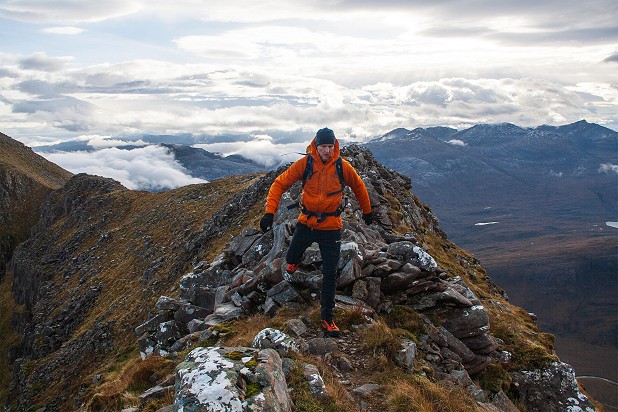
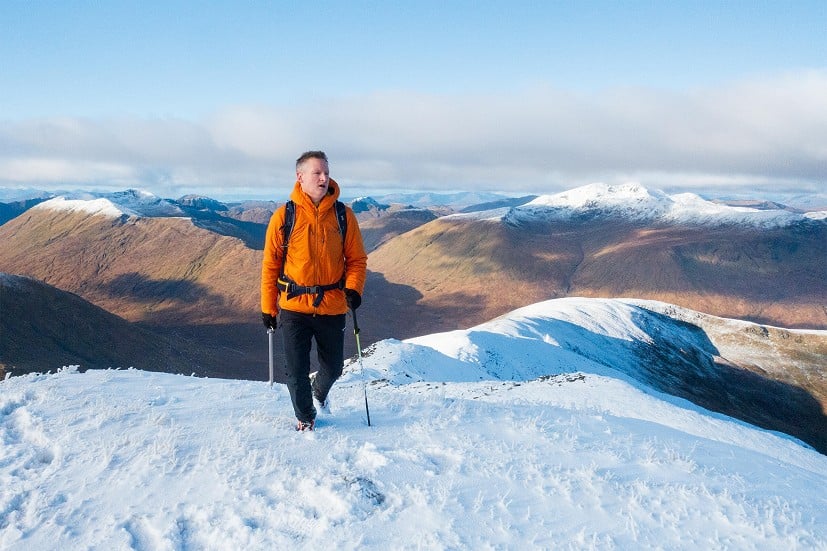
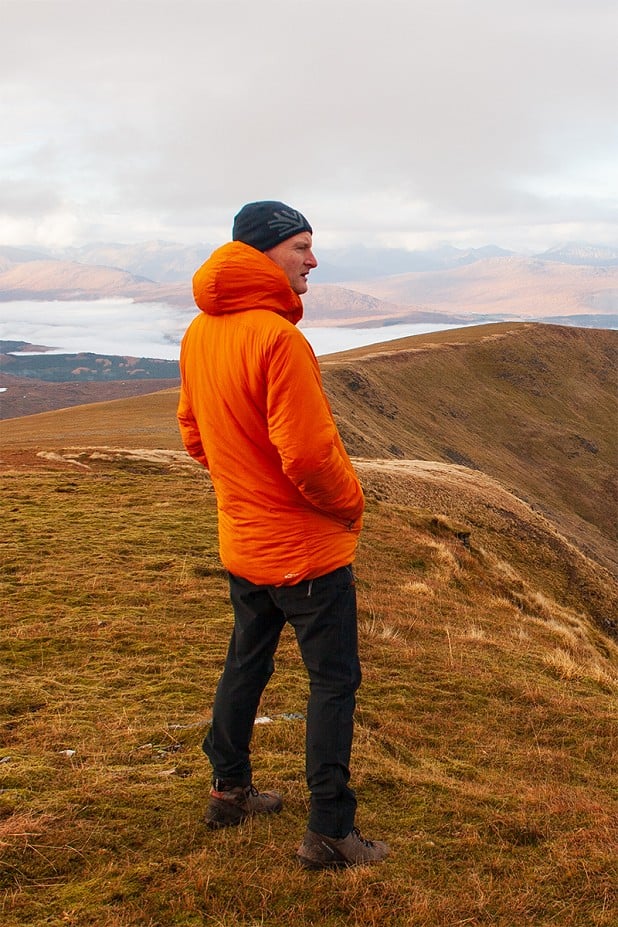

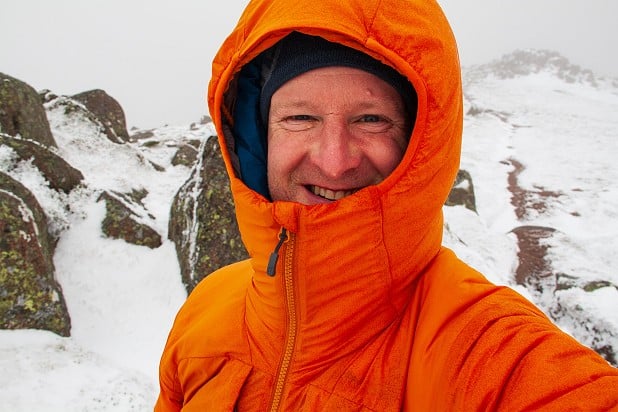
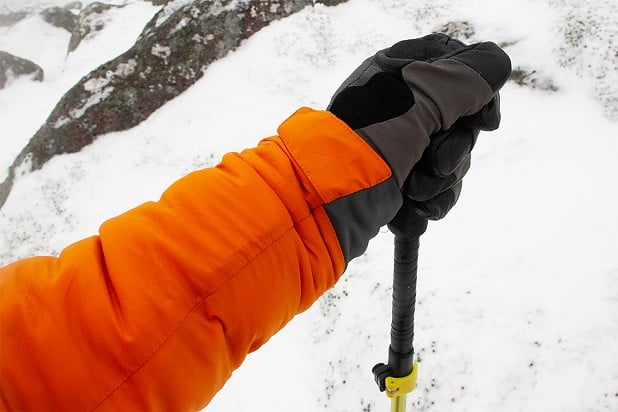
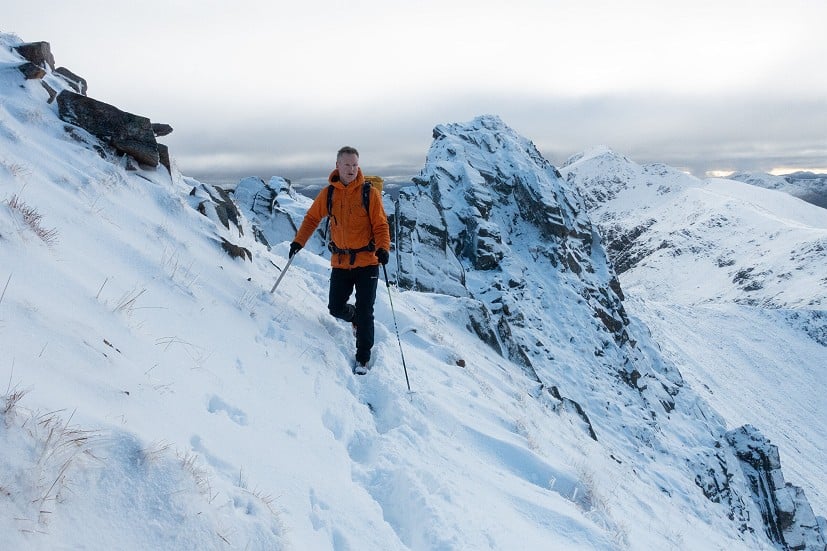
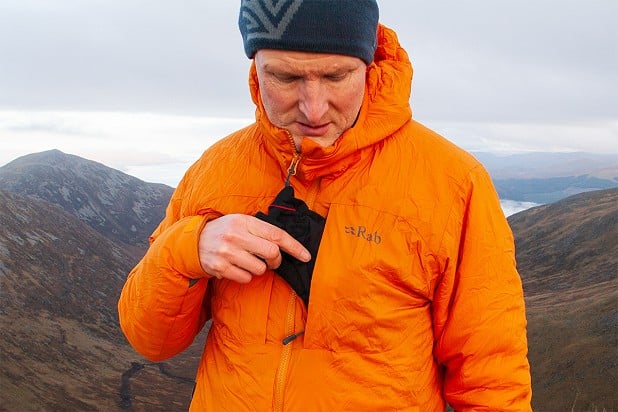
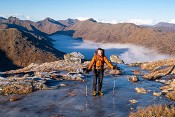




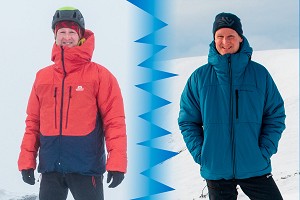

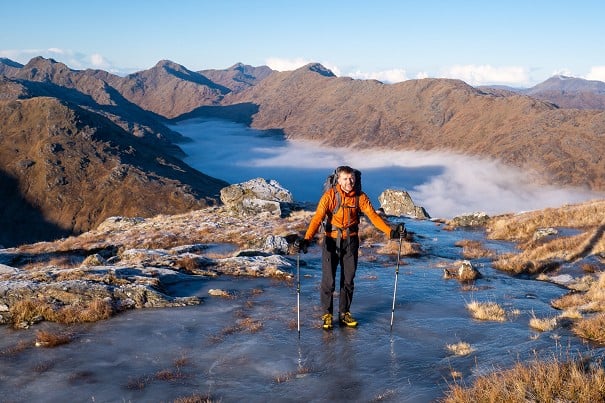


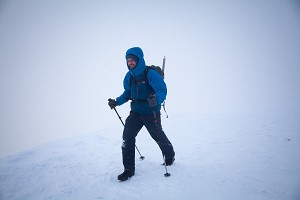

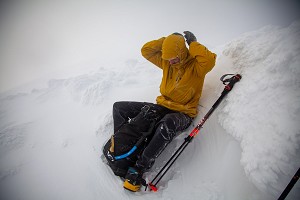
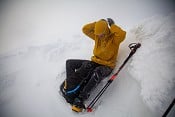





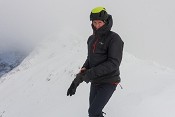


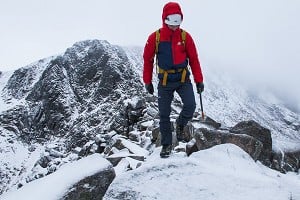







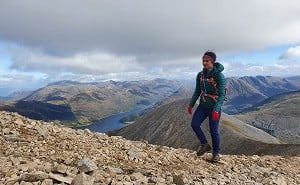
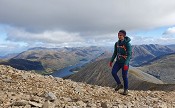


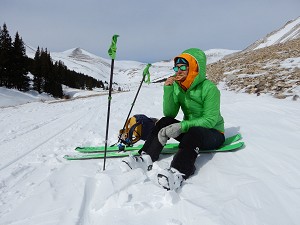
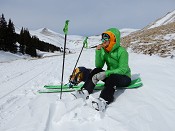
Comments
Excellent detailed review as ever.
One thing I'd add is these type of jackets seem very much jack of all trades master of none to me. For something to wear on the move I think Rab's own vapour rise, ME kinesis, or even an unlined softshell over a fleece is going to be far less sweaty and more useful the vast majority of the time. For use as a belay jacket/emergency layer I'd look for something that is less air-permeable (for obvious reasons), and for overall levels of warmth you can get something much warmer and more compressible by choosing a down jacket of equal/less weight.
I suppose it depends on how sweaty the individual is, but certainly for me I can't imagine many conditions where I'd be able to wear an insulated jacket while moving without completely soaking myself. My standard winter on-the-go outfit would similarly be something like a Vapour Rise or a softshell over a couple of baselayers.
I'd often prefer synthetic over down for the standing-around-or-oh-shit layer though, unless I'm very sure it's going to be well below freezing & dry.
Yeah personally for any sort of hill/mountain walk this would be far too warm for moving in for 80% of the day for me. As you said something like a vapour rise is going to feel better against the skin after you've sweated into it. Not sure why they would increase the insulation amount but then also increase the air permeability. I tend to think its a much better option to pick bits of kit that function really well for 1/2 specific purpose rather than something that tries to do half a dozen things (but none of them really well).
In reply to
I'd agree for a jacket that's purpose is an active piece this level of insulation seems too much, it's more akin to a belay jacket but as already mentioned I'd want a belay jacket to err towards less wind and weather permeability not more
In general I'd prefer to have something capable of excellent sweat management next to the skin and rapid drying time, eg vapour rise, polartec alpha, driclime, Kinesis etc or a grid fleece, then I would combine this layer with a lightweight xenair or similar if things got really cold or activity levels dipped eg a 40 or 60g xenair
Unfortunately I don't think they do a 60g weight xenair, I think it would be a useful weight, also I wish they'd do more hood less options, the lack of head and neck mobility from multiple hoods drives me crazy
https://rab.equipment/uk/xenair-alpine-light-jacket
This is 60g/40g